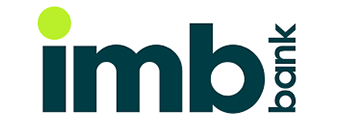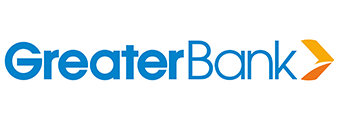Despite an uptick in awareness amid the high interest rate environment, Aussie borrowers continue to believe traditional banks are safer mortgage providers than non-bank lenders.
However, neither banks nor non-banks offer more safety nets for borrowers than the other. When it comes to lending, all providers must adhere to the same rules and regulations.
While non-banks aren’t Authorised Deposit-taking Institutions (ADIs) – meaning they can’t keep consumer funds and, therefore, can’t offer the likes of savings accounts and term deposits – they can provide loans.
And beyond simply providing loans, non-banks commonly offer mortgage rates that feature among the lowest in the market.
So, what’s behind the assumption that banks are the safer home loan providers, and what might borrowers stand to gain by going with a non-bank instead?
Let’s dive into the debate so you can make an informed decision when choosing a mortgage lender.
The rise of non-bank lenders
More than $1.4 billion worth of home loans were written by non-banks in May 2024 – the highest figure since September 2022 and making up nearly 7% of all mortgage lending that month, according to Australian Bureau of Statistics (ABS) data.
Perhaps it’s unsurprising then, that awareness of non-bank lenders among borrowers has also risen in recent times, as Brighten Home Loans’ latest borrower survey found.
Nearly three quarters of survey participants who had taken out a new home loan in the last five years knew of the existence of non-bank lenders.
“This is certainly higher than it was even three years ago,” Brighten Home Loans CEO Jason Azzopardi told Your Mortgage.

Brighten Home Loans CEO Jason Azzopardi. Image supplied.
“There are a few possible reasons for this. First, Australia had a very low interest rate environment, steadily dropping from the 2% cash rate in 2015 to the 0.1% cash rate in April 2022, before the Reserve Bank of Australia (RBA) began cash rate hikes.
“As interest rates have climbed, borrowers are doing more research, which increases non-bank lender awareness.”
More than just aware, most borrowers signing a mortgage in recent times contemplated going with an institution that isn’t a bank.
Six in ten homebuyers surveyed considered taking out a home loan through a non-bank lender, with half of those attracted to the competitive interest rates on the table.
Another 47% considered a non-bank lender home loan on their broker’s advice, while a third liked the eligibility requirements of non-bank lenders’ mortgage products.
Ultimately, however, the vast majority opted for traditional banks, with 34% of those who did perceiving them to be a safer, more reputable option – a misconception, according to industry experts.
Are non-banks less safe than banking majors?
Non-banks offer competitive rates, more relaxed eligibility criteria, and no less safety than even the big four banks, Mr Azzopardi notes.
“The idea that non-banks are less ‘safe’ for borrowers is a frustrating misconception,” he said.
“In relation to sourcing a lending product from a non-bank lender, consumers have the same protections as they would sourcing a loan from a bank.”
Just like the banks Aussies have grown to recognise, non-bank lenders have to abide by strict laws and regulations.
The standards under which they operate are set out in the National Consumer Credit Protection Act and they’re overseen by the Australian Securities and Investment Commission (ASIC).
“The truth is that we are subject to rigorous oversight and must adhere to strict lending standards,” loans.com.au managing director Marie Mortimer told Your Mortgage.

loans.com.au managing director Marie Mortimer. Image supplied.
There’s only one area in which banks are subject to more oversight than non-banks: the deposit space, where the latter group doesn’t play.
Banks must adhere to Australian Prudential Regulation Authority (APRA) regulations and the Banking Act, ensuring the security and stability of deposits and maintaining stringent capital requirements to protect depositors.
Since non-banks don’t take deposits, they simply aren’t subject to such regulations.
In the interest of transparency, both yourmortgage.com.au and loans.com.au are associates of the Firstmac Group.
Do non-bank lenders offer cheaper home loans than traditional banks?
When it comes to business practices, customer service, and interest rates on offer, non-bank lenders can vary just as much as banks do.
Not to mention, the home loan market can be an entirely different beast from one month to the next.
Still, it’s worth noting that, as of the time of writing, many of the lowest-rate mortgage deals on offer in Australia are advertised by non-bank lenders.
The likes of loans.com.au, Unloan, Tiimely Home, Reduce Home Loans, and Pacific Mortgage Group are advertising variable rates as much as 46 basis points lower than that of the average new home loan signed in May – 6.3% p.a. per RBA data.
“As an online lender, loans.com.au doesn't have bricks-and-mortar branches, and we pass the savings on to borrowers through lower interest rates,” Ms Mortimer said.
You can find some of the most competitive home loans offered by non-bank lenders right now in the table below:
| Lender | Home Loan | Interest Rate | Comparison Rate* | Monthly Repayment | Repayment type | Rate Type | Offset | Redraw | Ongoing Fees | Upfront Fees | Max LVR | Lump Sum Repayment | Extra Repayments | Split Loan Option | Tags | Features | Link | Compare | Promoted Product | Disclosure |
|---|---|---|---|---|---|---|---|---|---|---|---|---|---|---|---|---|---|---|---|---|
5.29% p.a. | 5.33% p.a. | $2,773 | Principal & Interest | Variable | $0 | $530 | 90% |
| Promoted | Disclosure | ||||||||||
5.19% p.a. | 5.10% p.a. | $2,742 | Principal & Interest | Variable | $0 | $0 | 80% |
| Disclosure | |||||||||||
5.24% p.a. | 5.29% p.a. | $2,758 | Principal & Interest | Variable | $0 | $1,100 | 80% | Disclosure | ||||||||||||
5.74% p.a. | 5.77% p.a. | $2,915 | Principal & Interest | Variable | $0 | $845 | 90% | |||||||||||||
5.94% p.a. | 6.23% p.a. | $2,978 | Principal & Interest | Variable | $350 | $350 | 95% | |||||||||||||
6.24% p.a. | 6.27% p.a. | $3,075 | Principal & Interest | Variable | $0 | $350 | 90% | |||||||||||||
6.39% p.a. | 6.41% p.a. | $3,124 | Principal & Interest | Variable | $0 | $350 | 95% | |||||||||||||
6.49% p.a. | 6.49% p.a. | $3,157 | Principal & Interest | Variable | $0 | $320 | 80% | |||||||||||||
6.82% p.a. | 6.94% p.a. | $3,266 | Principal & Interest | Variable | $10 | $450 | 80% | |||||||||||||
5.39% p.a. | 5.43% p.a. | $2,805 | Principal & Interest | Variable | $0 | $530 | 90% |
| Promoted | Disclosure |
Beyond commonly promising low rates, non-banks also tend to offer options for borrowers who mightn't qualify for a home loan through a bank.
Borrowers with unusual income streams, such as the self-employed, are often better serviced by non-banks, as they can take a more holistic approach to measuring their ability to repay, Mr Azzopardi said.
Homeowner refinances from Big Four Bank to non-bank lender: “I would never leave”
Perth homeowner Susan Egan decided to refinance her mortgage from one of Australia’s largest banks, Westpac, to non-bank lender loans.com.au after the big four bank refused to waive admin fees.
“We wanted to borrow some money for renovations and we asked [Westpac] if we could use the equity in our house,” Ms. Egan told Your Mortgage.
“They said yes, but there was going to be $1,500 in admin fees.
“I said, ‘Well, can you waive that for us?’ and they said, ‘No, we're not prepared to drop them.’
“So we looked around and saw that loans.com.au had an offer, and it was low interest.
“I thought, ‘Well, why not?’”
While Ms. Egan didn’t see any risk in refinancing to a non-bank lender, some around her expressed concern about not having hadn’t heard of loans.com.au.
“When I was telling people I’m with loans.com.au, they were going ‘What? It sounds like a dodgy place,’” she said.
“I went, ‘What's the risk? I've got their money, they haven't got my money.’”
What did concern her, though, was the fact the lender doesn’t offer in-branch banking, with all business between borrower and lender being conducted online or over the phone.
However, such worries proved unnecessary thanks to simple processes and an Australian support team.
In the years since, Ms. Egan has returned to loans.com.au four times to ask if the lender could drop her interest rate any lower.
“They have done it three of the four times,” she said. “It's not much, but it helps a little bit in this environment.
“I would never leave them.”
The downsides of taking out a home loan through a non-bank lender
While there are many benefits to taking out a home loan through a non-bank lender, there are also a few noteworthy disadvantages.
While non-bank lenders can offer competitive rates and flexible loan options, there are some potential downsides that borrowers should consider:
-
Limited product range
Non-bank lenders typically focus on mortgage products and might not offer a wide range of other financial products, like credit cards or insurance.
They also can’t provide deposit products like savings accounts or term deposits.
That might be inconvenient for borrowers who prefer to keep all their financial products with one institution.
-
No or fewer physical branches
Non-bank lenders often operate entirely online, without physical branches.
Thus, they mightn't suit borrowers who prefer face-to-face interactions and personalised service.
-
Potential for higher fees
While non-bank lenders often offer lower interest rates, some might also demand higher fees. That might be particularly the case when it comes to low-doc home loans.
Borrowers need to carefully review the fee structure to ensure they’re not offsetting potential savings on interest rates with additional costs.
-
Missing some fan-favourite features
Since non-bank lenders can’t take customer deposits, they also can’t offer traditional offset accounts.
Though, they might provide features that operate in a similar way.
Image by Moja Msanii on Unsplash



















Share